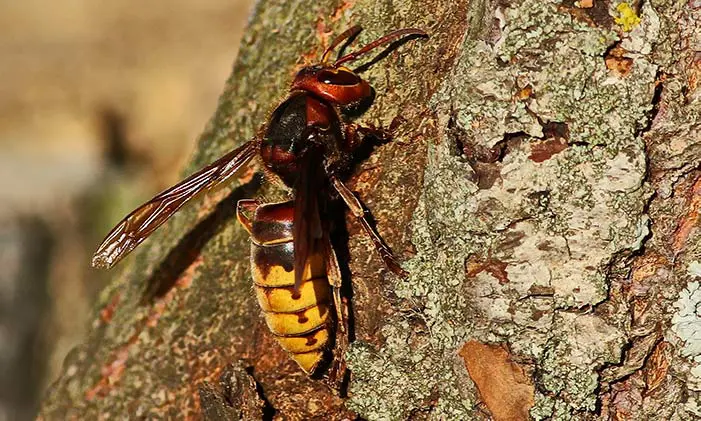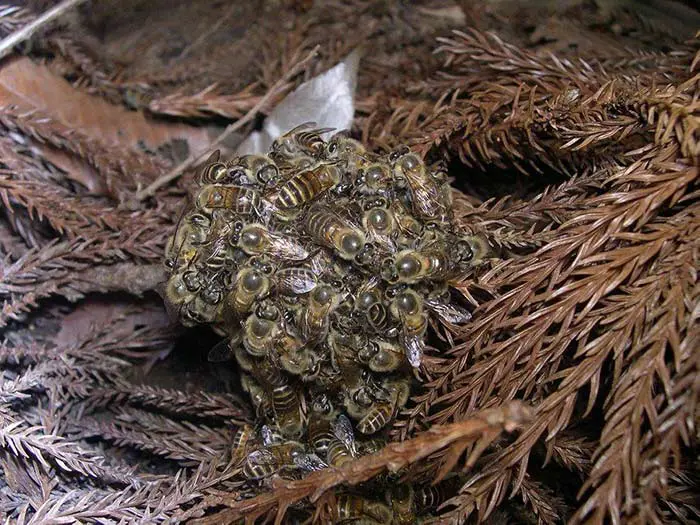Why 'Murder Hornets'
Could be a potential threat to American honeybees

Why 'Murder Hornets'

Could be a potential threat to American honeybees
Asian Giant Hornets
Along with a pandemic and a slew of other unfortunate events this year befalls the threat of an invasive insect commonly referred to as the Asian giant hornet, or sparrow wasp. Japanese media outlets have referred to these hornets as ‘murder hornets’ since 2008, but the New York Times headline containing ‘murder hornets’ made the infamous nickname in America popular.
These Asian giant hornets are commonly found in temperate and tropical areas of eastern Asia such as Japan, China, India, and Sri Lanka. The mysterious appearance of Asian giant hornets was reported for the first time ever in the United States in September of 2019. A nest was discovered in Vancouver Island, British Columbia and another in the northwestern portion of Washington State. The DNA from both nests does not suggest any relation between the two, meaning there were two independent introductions of the hornets to this country.
This species of hornet is deadly to surrounding bee populations because approximately 20-30 hornets can attack and decimate beehives containing 5,000-25,000 honeybees within only a few hours. These 1.5-inch hornets will decapitate bees, harvesting the protein found in the thorax before thieving the honeybees’ unborn brood to feed their young.

One of the Largest Hornets in the World
Not all Asian giant hornets decimate surrounding hives, but it has been observed they will become triggered when there are two or more Asian giant hornets present. Because of this, Asian beekeepers have several strategies to deter groups of hornets around their bees. The same strategies could be implemented in the United States if they ever become a true threat. In response to the possible invasion, the USDA published an article explaining what to do if you live in an area where Asian giant hornets are occupying.
The Asian giant hornet is among the largest hornet in the world with their queens being a little over two inches while her workers are typically one and a half inches. These worker hornets look similar to the insects found in Pennsylvania such as European hornets, yellowjackets, bald-faced hornets, and Eastern cicada killers.
This confusion of appearance has already led many to unnecessarily kill non-invasive hornets and wasps. Although the hornets have only been found in one county of Washington, internet searches for hornet spray has risen immensely, consequently killing many native species out of a fear of the so-called ‘murder hornets’. Until the Entomological Society of America defines a more suitable name, it is advised to not use the exaggerated name of ‘murder hornet’ as it spreads the falsehood that there is a present and imminent threat to the United States. Floyd Shockley, entomology collections manager at the Smithsonian Museum of Natural History, says that the two-inch Asian giant hornets are not an immediate danger to humans since they keep to themselves and are only a threat if they are provoked.
Giant Asian Hornets are a threat to Honeybees
The two discovered hornet nests, which are typically built underground, have since been eradicated but it is unclear if they are established and reproducing in more non-native areas in the United States. Given the lack of evidence supporting a possible invasion of the United States, it is unlikely that there are any more nests to be found.
Japanese honeybees have co-evolved to defend against the Asian giant hornets’ attacks, forming a tight ball around an Asian giant hornet while buzzing their wings to create heat. The hornet will die at a temperature above 115F whereas the honeybees will survive up to 122F. The honeybees in the United States have not co-evolved in the same manner, rendering them defenseless against an Asian giant hornet attack.
Aside from Asian giant hornet threats, honeybees and their caretakers have many other pressing issues to worry about, such as pesticides, fungus, and termites. Each worker bee typically lives for six weeks, contributing to and defending their hive and nest. Their impact goes far beyond just taking care of their homes and affects our production as a society. Nearly three-quarters of flowering plants require pollinators to produce fruit, and honeybees are perfect for the job. Additionally, approximately $14 billion dollars of agricultural crops depend on their domesticated beehives, helping one-third of all crops. About 160 million pounds of honey is produced each year from the 2.8 million honeybee colonies across the United States.
These Asian giant hornets, although invasive, are an intelligent species with complex nesting arrangements and hierarchies that play their role in the natural balance of life when they are in their native habitat. Forty percent of all insect species on earth, including the honeybees, are in decline according to a study conducted in April of 2019. If and when dangers such as the Asian giant hornets are present, it is important to do our part in returning the environment to its natural balance.
Intensive agriculture, pollutants, invasive species, and climate change are other reasons why the honeybee population and other insect species are under threat and may become extinct in the coming decades. For now, Asian giant hornets are a very small threat to the United States, assuring American honeybees everywhere that their nests will not be threatened.




















